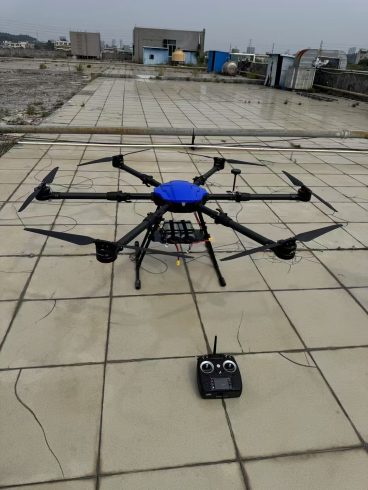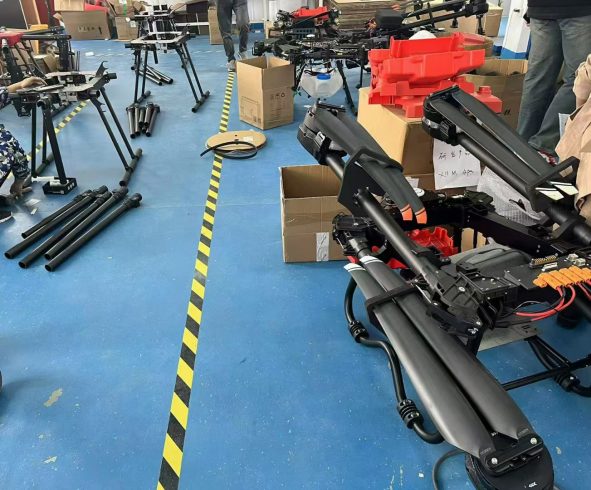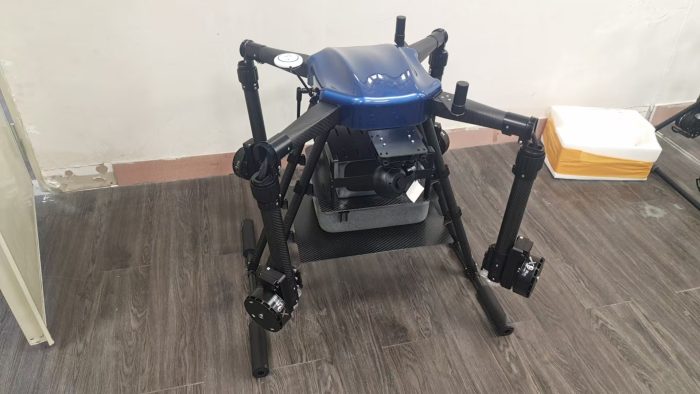![图片[1]-Nighttime Drone Spraying Safety: Best Practices for Risk-Free Agricultural Operations-msoen](https://www.msoen.com/wp-content/uploads/2025/04/edbbb52c8b184639-1024x576.jpg)
Ensure safe nighttime drone spraying with expert guidelines on lighting, compliance, equipment setup, and emergency protocols. Learn how to optimize efficiency while minimizing risks in low-light conditions.
Introduction: The Growing Trend of Nighttime Drone Spraying
As agricultural demands rise, farmers increasingly turn to nighttime drone spraying to avoid daytime heat, reduce chemical evaporation, and optimize crop health. However, operating drones in low-light environments introduces unique risks, including reduced visibility, equipment malfunctions, and regulatory hurdles. This article outlines critical safety practices to ensure efficient and compliant nighttime drone spraying operations.
- Key Risks of Nighttime Drone Spraying
- Limited Visibility: Reduced light increases the risk of collisions with obstacles or other aircraft.
- Equipment Stress: Cold temperatures and humidity can affect battery life and sensor accuracy.
- Regulatory Compliance: Night operations often require special certifications (e.g., FAA Part 107 Remote Pilot License in the U.S.).
- Human Error: Fatigue or misjudgment under low-light conditions may lead to overspraying or accidents.
- Essential Safety Preparations A. Equipment Setup
- Anti-Collision Lighting: Equip drones with bright, FAA-compliant LED lights (red/white) for visibility.
- Thermal Cameras: Use thermal imaging to detect obstacles like power lines or trees in darkness.
- Redundant Batteries: Cold weather drains lithium-ion batteries faster—carry spare batteries pre-warmed in insulated cases. B. Environmental Assessments
- Weather Checks: Avoid spraying during high winds (>10 mph) or low visibility (fog/rain).
- Wildlife Awareness: Lights may disturb nocturnal animals—schedule flights during low-activity hours. C. Regulatory Compliance
- Permits and Licenses: Confirm local regulations for nighttime UAV operations (e.g., EASA’s NCOA in Europe).
- No-Fly Zones: Update flight software with real-time airspace restrictions (e.g., near airports or wildlife reserves).
- Best Practices for Safe Operations A. Pre-Flight Protocols
- Battery Warm-Up: Keep drones and batteries in a heated tent or vehicle for 15 minutes before takeoff.
- System Checks: Test obstacle avoidance sensors, GPS signals, and spray nozzles in low-light simulations.
- Flight Path Mapping: Use RTK GPS to pre-program routes, avoiding sensitive areas like waterways. B. During Flight
- Maintain Communication: Assign a spotter to monitor the drone via remote controller and thermal imaging.
- Altitude Adjustments: Fly 2–3 meters above crop canopies to balance coverage and obstacle avoidance.
- Spray Pauses: Halt operations if sudden weather changes or equipment malfunctions occur. C. Post-Flight Actions
- Equipment Inspection: Clean nozzles and dry sensors to prevent chemical corrosion.
- Data Review: Analyze flight logs for deviations or errors to improve future operations.
- Emergency Preparedness
- Automatic Return-to-Home (RTH): Enable geofencing and RTH features to recover drones during signal loss.
- Emergency Landing Zones: Mark safe drop zones away from crops or infrastructure.
- First Aid Kits: Keep emergency supplies on-site for chemical exposure or minor injuries.
- Training and Team Coordination
- Certified Pilots: Ensure operators hold night-specific certifications (e.g., FAA’s Certified Flight Instructor for drones).
- Standard Operating Procedures (SOPs): Develop SOPs for night missions, including contingency plans.
- Team Roles: Assign distinct roles (pilot, spotter, ground crew) to avoid oversight.
- Future Innovations Enhancing Night Safety
- AI-Powered Obstacle Avoidance: Machine learning algorithms predict and evade hazards in real time.
- Solar-Powered Drones: Extend operational windows with energy-efficient designs.
- Swarm Coordination: Coordinated fleets for large-scale night missions with synchronized navigation.
Conclusion: Prioritize Safety for Reliable Nighttime Operations
Nighttime drone spraying offers significant advantages but demands rigorous safety planning. By combining advanced equipment, regulatory compliance, and team training, farmers can mitigate risks while boosting efficiency.
Call to Action:
Ready to adopt safer nighttime spraying practices? Explore our smart agricultural drones equipped with anti-collision lighting, thermal imaging, and AI-driven automation. Contact us today to learn how technology can safeguard your harvest!












暂无评论内容